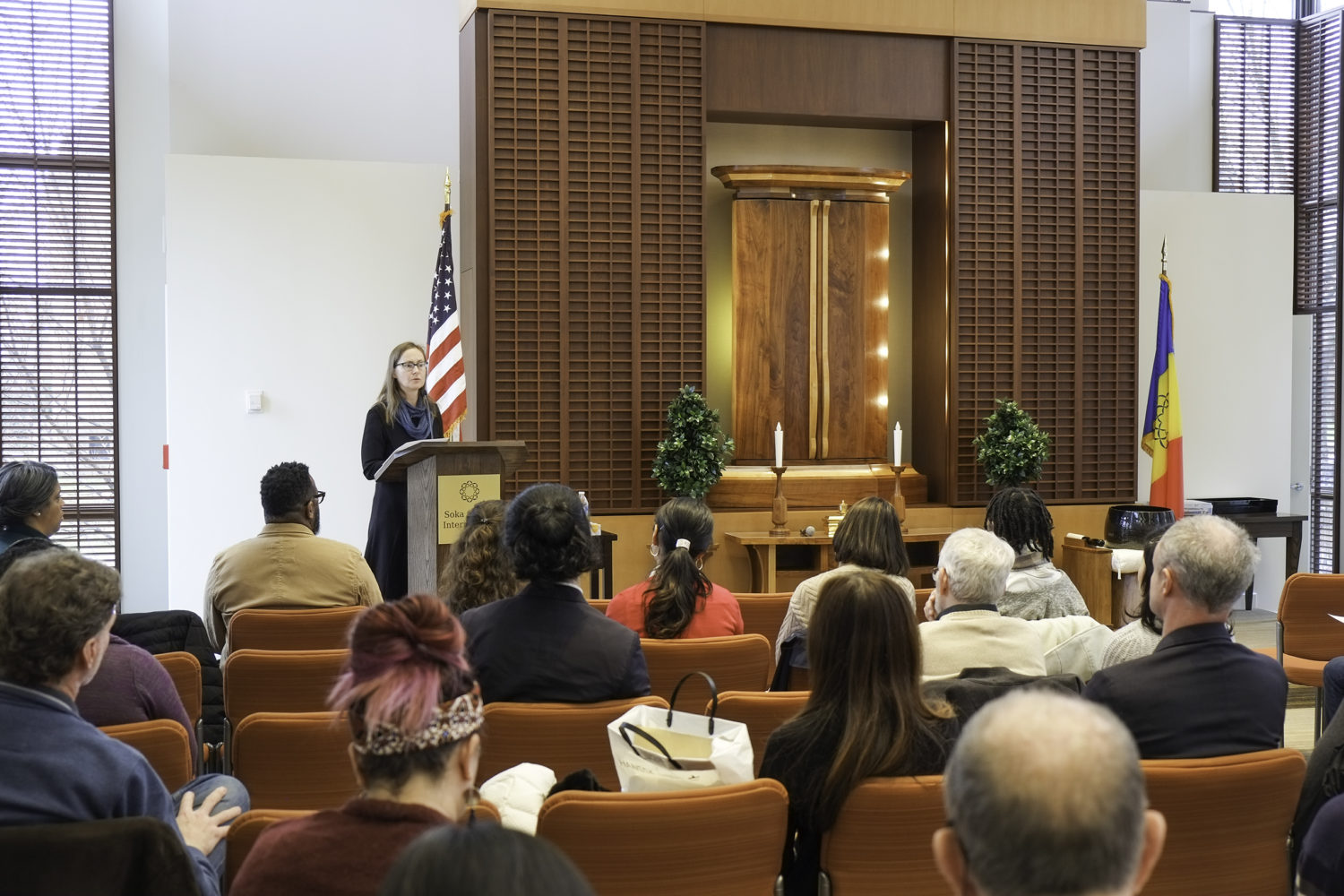by Mary Ishimoto Morris
Special to the Tribune
WASHINGTON, D.C., Dec. 14—What makes dialogue so special?
Such was the topic of passionate, award-winning conflict resolution scholar-practitioner Susan H. Allen’s lecture, “Peacemaking Dialogue as a Living Practice,” held at the SGI-USA Washington, D.C., Buddhist Center. The gathering was hosted by the SGI-USA Culture of Peace Distinguished Speakers Series.
Dr. Allen, associate professor at the School for Conflict Analysis and Resolution, who directs the Center for Peacemaking Practice at George Mason University in Fairfax, Virginia, contributed a chapter in Peacebuilding Through Dialogue: Education, Human Transformation, and Conflict Resolution, published by George Mason University Press in collaboration with the Ikeda Center for Peace, Learning, and Dialogue, with a foreword by SGI President Ikeda.
“When we look at it through a consciousness lens, we can see some of the magic of dialogue,” she said. “We become more aware of others’ perspectives, but we also become more aware of our own perspective.” This awakened awareness, Dr. Allen emphasized, can lead to a moment when “shift happens”—when our consciousness transitions from “My way is the right way” to realizing, “Oh, it’s really complex; there are lots of factors here, and I can see where they’re coming from.”
Dr. Allen also said, “I am heartened to learn that SGI-USA has an interest in and experience with dialogue.” Another faith example she cited of bridging divides included Quaker conciliation, which can bring unrecognized parties together for unofficial discussions, based on their belief in “that of God in every man” and respect for the dignity of each person.
In response to a question about the societal trend toward electronic communication versus an “embodied” (physical) presence in dialogue, she said there is synergy in presence. “[With Skype or Zoom] you can’t sense if someone’s about to cry the same way as if you were present,” she said. Dr. Allen also imparted this invaluable piece of guidance: When we leave the dialogue, “we need to protect and nurture those new insights.”
You are reading {{ meterCount }} of {{ meterMax }} free premium articles

